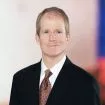The wireless industry has revolutionized the way we connect, from facilitating teleworking, distance learning, and telemedicine to allowing the American public to interact virtually in almost all other aspects of their daily lives. Leading policymakers – federal regulators and legislators – are making it a top priority to ensure that the wireless industry has the tools and resources it needs to keep pace with this evolving landscape. This blog provides monthly updates on actions by federal regulatory bodies responsible for communications policy and Congressional efforts to support wireless connectivity. And this month we highlight the FCC's new cybersecurity labeling program, which will help inform consumers about the security of their wireless devices.
Regulatory Actions and Initiatives
Wireless Networks and Devices
The FCC Announces a New Cybersecurity Program. The FCC issued a News Release on July 18, 2023, announcing that Chairwoman Rosenworcel has circulated a Notice of Proposed Rulemaking to create a voluntary cybersecurity labeling program under which qualifying IoT and smart devices would be labeled with a new U.S. Cyber Trust Mark alongside a QR code that consumers can scan for further information (pending approval by the U.S. Patent and Trademark Office). The proposal seeks comment on several issues, including the scope of devices that should be included in the program, the party responsible for overseeing and managing the program, the security standards that could apply to different devices, and how program participants can demonstrate compliance with those standards. The News Release notes that if the proposal is adopted, the program could be up and running by late 2024. In remarks to the White House, Chairwoman Rosenworcel noted that "just like the 'Energy Star' logo helps consumers know what devices are energy efficient, the Cyber Trust Mark will help consumers make more informed purchasing decisions about device privacy and security." And the White House's press statement about the new program explained that "[t]his is the latest example of President Biden's leadership on behalf of hard-working families—from cracking down on hidden junk fees, to strengthening cyber protections and protecting the privacy of people in their own homes."
The FCC Releases its Second Report on Rip-and-Replace. On July 10, 2023, the FCC's Wireline Competition Bureau ("WCB") released its second Secure and Trusted Communications Networks Reimbursement Program ("Reimbursement Program") report ("Report") required by Congress. Since the WCB's last report in January, Reimbursement Program funding recipients have submitted two status updates (in January and April) and one spending update (in February). Based on those updates, the Report notes, among other things, that, as of June 30, 2023, 5,531 reimbursement claims have been received, up from 1,988 claims. In addition, approved reimbursement claims now total $190.35 million. This is an increase of almost $150 million from the $40.67 million total approved funding in January. The WCB estimates that (i) 13 percent of recipients have completed permanent removal, replacement, and disposal of all covered equipment on their networks (an increase from the estimated 10 percent); (ii) 85 percent of recipients have made some rip-and-replace progress but have not completed their work (an increase from the 83 percent); and (iii) two percent of recipients have not started any rip-and-replace work as of April. Recipients also continue to report facing challenges to their rip-and-replace efforts, including a lack of funding and supply chain delays. The WCB further released a Public Notice reminding rip-and-replace support recipients that they must submit their next spending report by August 10 through the Supply Chain Reimbursement Program Online Portal.
The FCC Circulates Rules to Protect Consumers Against Scammers. The FCC issued a News Release on July 11, 2023, announcing that Chairwoman Rosenworcel has circulated rules to protect consumers from scammers that attempt to gain access to their data and personal information through SIM swapping scams (i.e., when a bad actor convinces a victim's wireless carrier to transfer the victim's service from the victim's cell phone to a cell phone in the bad actor's possession) and port-out fraud (i.e., when a bad actor, posing as the victim, opens an account with a carrier other than the victim's current carrier, and the bad actor then arranges for the victim's phone number to be transferred to the account with the new carrier). If adopted, the proposed Report and Order would revise the FCC's Customer Proprietary Network Information ("CPNI") and Local Number Portability rules to require wireless providers to adopt secure methods of authenticating a customer before redirecting a customer's phone number to a new device or provider. It would also require wireless providers to immediately notify customers whenever a SIM change or port-out request is made on customers' accounts. A Further Notice of Proposed Rulemaking accompanying the Report and Order would, if adopted, seek comment on ways to further harmonize the new rules with existing CPNI rules and additional steps the FCC can take to harmonize government efforts to address SIM swap and port-out fraud.
The FCC Invites Additional Dialog on Security Risks of IoT Devices. The FCC's Office of Engineering and Technology released a Public Notice on July 18, 2023, changing the status of a proceeding it initiated in June 2021 through a Notice of Inquiry ("NOI") regarding security risks that are associated with IoT devices. Specifically, it changed the proceeding from "permit-but-disclose" to "exempt" because significant developments have taken place since the NOI was released, and the FCC would like to facilitate additional opportunities for informal discussions among the staff and interested stakeholders. Accordingly, ex parte presentations to or from the FCC regarding the NOI need not be disclosed.
Wireless Spectrum
The FCC Opens a Proceeding to Evaluate Spectrum Usage. On July 13, 2023, the FCC released a draft NOI that would, if adopted at its next meeting in August, explore avenues to advance its understanding of non-federal spectrum usage through new data sources, technologies, and methods such as AI. Specifically, the FCC would seek comment on (i) how to define spectrum usage; (ii) whether there are band-specific considerations for studying spectrum usage; and (iii) the data sources that could be used to evaluate spectrum usage. The FCC would also seek comment on next steps, including potential near-term (e.g., pilot programs) and long-term (e.g., policy statements) actions to study spectrum usage. Comments and reply comments would be due 30 and 60 days, respectively, after the NOI is published in the Federal Register.
FCC Chairwoman Rosenworcel Circulates Rules on Spectrum for Communications During Space Launches. On July 28, 2023, the FCC issued a News Release announcing that Chairwoman Rosenworcel has circulated final rules regarding spectrum use for communications services during space launches. The FCC's Further Notice of Proposed Rulemaking in this proceeding previously requested comment on, among other things, the potential allocation of the 420-430 MHz, 2025-2110 MHz, and 5650-5925 MHz bands for commercial communications purposes as well as ways to facilitate federal use of commercial satellite services in non-federal satellite bands, including the 4.0-4.2 GHz, 5.925-6.425 GHz, 10.7-11.7 GHz, 12.7-13.25 GHz, and 28.35-29.1 GHz bands. The final rules would, among other things, adopt a new allocation in the 2025-2110 MHz band for space operations on a secondary basis, expand the spectrum available for commercial space operations on secondary basis in the 2200-2290 MHz band, and adopt licensing and technical rules for space launch operations. It would also direct the FCC's Office of Engineering and Technology to issue a Public Notice opening a new docket for comments on the expanded federal use of the non-federal satellite bands. Finally, it would include a Further Notice of Proposed Rulemaking that would seek further comment "to inform possible further actions." Chairwoman Rosenworcel commented that "[t]he next-generation Space Age is already here . . . . These rules will ensure commercial space launches have the necessary spectrum resources for reliable communications no matter their mission."
The Pleading Cycle for Comments on the 42 GHz Band is Established. The FCC's Notice of Proposed Rulemaking proposing that spectrum in the 42-42.5 GHz ("42 GHz") band be made available for commercial wireless services through a non-exclusive spectrum access model was published in the Federal Register on July 31, 2023. Accordingly, comments and reply comments on the FCC's proposals, which include three proposed shared licensing approaches to the spectrum, are due August 30 and September 29, respectively.
In the Courts
On July 14, 2023, the U.S. Court of Appeals for the Third Circuit issued a decision in Cellco P'ship v. White Deer Twp. Zoning Hrg. Bd., 2023 U.S. App. LEXIS 17909, changing its standard for evaluating an "effective prohibition" claim under Section 332(c)(7)(B)(i)(II), 47 U.S.C. § 332(c)(7)(B)(i)(II). Although the Ninth Circuit affirmed the FCC's order on appeal, the Third Circuit is the first Circuit Court to adopt the FCC's 2018 clarification of the effective prohibition standard in Accelerating Wireline Broadband Deployment by Removing Barriers to Infrastructure Inv., 33 FCC Rcd 7705 (2018).
In the Declaratory Ruling, the FCC clarified that "an effective prohibition [of service] occurs where a state or local legal requirement materially inhibits a provider's ability to engage in any of a variety of activities related to its provision of a covered service." Id. ¶ 37. The FCC further clarified that "a state or local legal requirement could materially inhibit service in numerous ways – not only by rendering a service provider unable to provide an existing service in a new geographic area or by restricting the entry of a new provider in providing service in a particular area, but also by materially inhibiting the introduction of new services or the improvement of existing services." Id. The FCC also clarified that the traditional two-part test used by courts under Section 332, in which they consider whether there is a significant gap in service and a consideration of alternatives, was incorrect and "incompatible with a world where the vast majority of new wireless builds are going to be designed to add network capacity and take advantage of new technologies, rather than plug gaps in network coverage." Id.
In adopting the FCC's standard, the Third Circuit provided important analysis supporting its decision. The Court emphasized that the old two-part test had no basis in the language of the statute and had been "cobbled together" by early court decisions. 2023 U.S. App. LEXIS 17909 at *10. The Third Circuit concluded that the FCC's "'materially inhibit' standard is more consistent than the [significant gap/least intrusive means] test with the [Telecommunications Act's] goals of 'promoting competition, securing higher quality services for American telecommunications consumers and encouraging the rapid deployment of new telecommunications technologies.'" Id. at *15-16.
Legislative Efforts
The House Energy and Commerce Committee Reports a Bill Reauthorizing NTIA. On July 27, 2023, the House Energy and Commerce Committee favorably reported the NTIA Reauthorization Act. If enacted, the bill would, among other things, reauthorize NTIA; codify NTIA's Office of Spectrum Management, Institute for Telecommunication Sciences, and Commerce Spectrum Management Advisory Committee in the NTIA Organization Act; and require NTIA to establish an interagency national security review process with respect to foreign ownership issues arising in applications for Section 214 authority, applications for submarine cable landing licenses, or applications to assign or transfer control of existing radio/wireless licenses.
The House Communications and Technology Subcommittee Reports a Bill that Would Change Eligible Reimbursement Costs from the Spectrum Relocation Fund. On July 12, 2023, the House Communications and Technology Subcommittee of the House Energy and Commerce Committee favorably reported the Spectrum Relocation Enhancement Act, which would amend the Spectrum Relocation Fund ("SRF") provision of the NTIA Organization Act by changing which relocation costs or sharing costs are eligible for reimbursement from the SRF and how federal agencies receive payments from the SRF. In addition, the bill would allow federal agencies to pay for enhanced capabilities when relocating.
The content of this article is intended to provide a general guide to the subject matter. Specialist advice should be sought about your specific circumstances.



